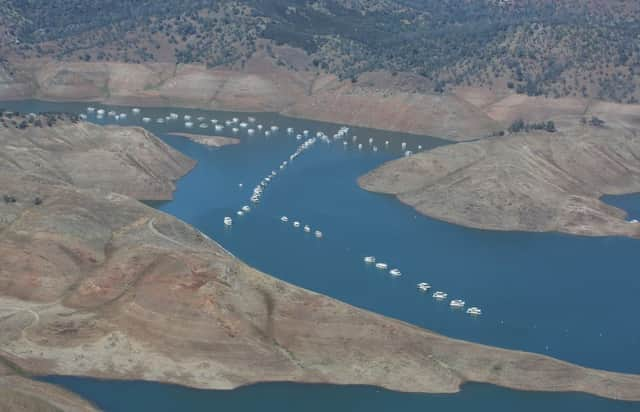California adopts unprecedented water restrictions


They are trying to alter how people, governments and businesses can use water, hoping to push reluctant residents to greater efforts at conservation.
The State Water Resources Control Board approved rules on Tuesday that force cities to limit watering on public property, encourage homeowners to let their lawns die and impose mandatory water-saving targets for the hundreds of local agencies and cities that supply water to California customers.
Advertisement
Hide AdAdvertisement
Hide AdGovernor Jerry Brown sought the more stringent regulations, arguing that voluntary conservation efforts have so far not yielded the water savings needed amid a four-year drought. He ordered water agencies to cut urban water use by 25 per cent from levels in 2013, the year before he declared a drought emergency.
“It is better to prepare now than face much more painful cuts should it not rain in the fall,” the board’s chairwoman Felicia Marcus said on Tuesday as the panel voted 5-0 to approve the new rules.
Although the rules are mandatory, it’s still unclear what punishment the state water board and local agencies will impose for those that fail to meet the targets. Board officials said they expect dramatic water savings by June and are willing to add restrictions and penalties for agencies that lag behind.
The board lacks staff to oversee each of the hundreds of water agencies, which range dramatically in size and scope.
Some local agencies that are tasked with achieving savings do not have the resources to issue fines to those who waste water, and many others have chosen not to do so.
Despite the dire warnings, it is also still not clear that Californians have grasped the seriousness of the drought or the need for conservation. Data released by the board showed that residents conserved little water in March.
A survey of water departments showed water use fell less than 4 per cent in March compared with the same month in 2013. Overall savings have been about 9 per cent since last summer. Under the new rules, each city is ordered to cut water use by up to 36 per cent compared with 2013. Some local water departments have called the proposal unrealistic, arguing that achieving steep cuts could cause higher water bills and declining property values, and drain resources from projects to develop drought-proof water technology, such as desalination and sewage recycling.
Representatives of water agencies in the San Diego area have been critical of the targets, pointing out that the region has slashed consumption and agencies have spent $3.5 billion (£2.3bn) to prepare for dry periods after facing severe cuts in earlier droughts.
Mark Weston, the chairman of the San Diego County Water Authority, said: “San Diego has lived the horror of what the state is going through right now.”